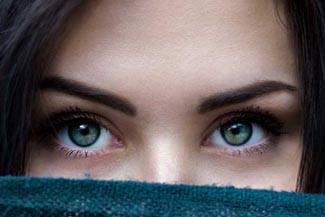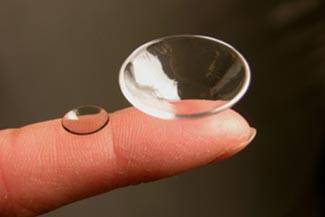
Treating Ocular Surface Disease with Scleral Lenses
Ocular surface disease (OSD) is not a single disease. It is a group of eye disorders that affect the surface of the eye. It can significantly affect your eyesight and quality of life. Many cases of ocular surface disease are misdiagnosed a simply ‘dry eyes’, so this condition can go undiagnosed and therefore untreated.
Fortunately, scleral lenses, which are custom-fit and lubricate the eye’s surface, can provide the relief and comfort people with OSD seek.
What are the Causes and Symptoms of Ocular Surface Disease?
Your tear film is controlled by various tissues and glands around the surface of your eyes. If there is a problem with those glands or tissues, it can cause your tear film to become unstable, resulting in dry eye syndrome or other types of ocular surface disorders.
A stable tear film keeps eyes moist, protects them against infection and cleans the surface of your cornea.
When your tear film is unstable, symptoms can include:
- Redness
- Watery eyes
- Blurry vision
- Gritty or scratchy feeling in the eye
- Itching
- Pain
Ocular surface disease symptoms are usually worse in the evening. They can also be exacerbated by windy conditions or a dry climate.
Types of Ocular Surface Disease
Some of the most common types of ocular surface disease include:
- Dry eye syndrome
- Blepharitis
- Meibomian gland dysfunction
- Allergies
- Keratitis
- Conjunctivitis
- Immunological conditions (e.g. Sjogren’s syndrome)
- Chemical or thermal burns
Treatment With Scleral Lenses
Depending on the type of condition, treatment can range from artificial tears (dry eye) to antihistamines (allergies), but many people continue to experience dry, itchy, irritated eyes. Eventually, many patients with ocular surface disease seek out more durable methods of treatment.
In recent years, scleral lenses have become a preferred treatment option for patients with ocular surface problems.
While they are generally used to treat refractive errors and corneal irregularities, scleral lenses can also provide immense relief to patients with ocular surface disease.
Scleral lenses do three things simultaneously: they protect the eye, they provide vision correction, and they serve a therapeutic purpose by lubricating the eye. Scleral lenses decrease discomfort, pain, itchiness and eye redness while providing sharp, clear vision.
These customized lenses form a dome over the cornea and rest on the sclera (the white part of the eye). The zone between the lens and the cornea provides a continuous moist environment that protects the cornea and provides relief for those with ocular surface disease.
At Specialty Contact Lens Center at Sight Improvement Center, we regularly diagnose, treat and manage the different types of ocular surface disease to help patients experience clear, healthy vision again. Our Dr. Hollander has the experience and proven treatment options you need to find relief from OSD.
If you have OSD and are interested in scleral lenses, Specialty Contact Lens Center at Sight Improvement Center can help. Dr. Hollander is specialized in fitting scleral lenses for dry eyes and other corneal conditions.
Our practice serves patients from New York City, Manhatten, The Bronx, and Brooklyn, New York and surrounding communities.










